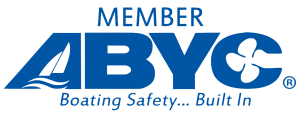
OneNet is a revolutionary new standard for marine electronics networking, designed to be the high-speed successor to NMEA 2000. It utilizes Ethernet for dramatically faster data transfer, seamlessly integrates with existing NMEA 2000 networks, and boasts a future-proof design that can handle the ever-growing demands of modern marine technology.
OneNet appears to be the future of NMEA for several reasons:
-
Speed and Power: OneNet utilizes Ethernet, offering a massive leap in speed (up to 40,000 times faster) compared to NMEA 2000. This allows for connection to more devices (up to 60) and handling of heavy data streams like radar, video, and sonar. It also simplifies power needs with Power-over-Ethernet (PoE).
-
Network Integration: OneNet isn't meant to replace existing NMEA 2000 networks, but rather complement them. NMEA 2000 networks can be seamlessly integrated with OneNet through gateways, allowing them to function together. This future-proofs existing systems.
-
Futureproofing: OneNet is designed for future technologies. Its high bandwidth allows for easy integration of upcoming data streams and sensor applications. The NMEA OneNet Working Groups are continually developing and adding new features to the standard.
- Power Management: OneNet will provide all of your shipboard electronics power via POE (Power Over Ethernet). Currently, most devices, such as chart plotters and radar need a separate power source alongside their NMEA 2000 network connection.
While commercially available OneNet devices haven't hit the market yet (as of March 2024), the future looks bright for OneNet to become the new standard in marine electronics networking.

